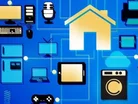Joining the IoT revolution? Three things your company should know

With breakneck speed, the Internet of Things (IoT) has branched out of the B2B and industrial markets where its concept first took root and exploded into the consumer market in a major way. It seems like almost every consumer device will be equipped with IoT connectivity – even products not traditionally associated with being on a digital network, such as home lighting and vacuum cleaners. At the most recent Consumer Electronics Show (CES), Samsung declared that its entire line of consumer products will be IoT-enabled by the year 2020. They’re not alone: Machina Research predicts that there will be more than 26 billion connected devices globally by 2023.
But for every new device boasting its IoT prowess, there are new levels of complexities in connectivity, scale, post-sale service, support and customer satisfaction to consider. To succeed in the IoT revolution, companies must anticipate the potential challenges they face and be prepared accordingly. Failure to do so will result in dissatisfied customers, who will have all too many alternatives where they can take their business and brand loyalty. Here are three things to keep in mind as you consider entering the IoT-enabled consumer market:
1. It’s all about connections.
By its very nature IoT creates large volumes of data by enabling it to be generated, collected and shared across devices automatically. This makes the quality, speed and security of the connection more important than ever. Your first stop on the road of participating in the IoT market must focus on connections, both the quality and quantity. The goal is to enable instant, secure connectivity between your products, applications, and business. Ultrafast connectivity is critical when it comes to the consumer adoption of IoT products. Consumers today will not wait around for applications to load or information to travel – they expect immediate connectivity. The good news is, companies who have been considering introducing a product in this market no longer need to implement and manage IoT connectivity themselves. Sourcing the connectivity opens the door to developing highly scalable IoT-enabled solutions across multiple industries.
2. Security can’t be an ‘after-thought’.
Too often, we’ve seen tradeoffs between speed, security and scale when it comes to IoT-enabled devices. In the early days, users were willing to make this tradeoff, but as we move further into IoT adoption lifecycle, consumers’ expectations of privacy and safety are rising. Imagine what a criminal could do with access to consumer’s Internet-connected garage door opener, and you start to see the darker side of the IoT. Furthermore, the quantity of personal data being collected means household devices become increasingly larger honey pots for any individual or organisation keen to access or sell user information.
The key to IoT security – and to building trust with consumers – lies in built-in security to connected devices, or integrating security as a service from a partner company.
3. Collected data must be managed, even post-sale.
Collecting detailed information on a regular basis from every device you have on the market will create a massive amount of data that will keep on flooding in. This data must be properly managed, stored and analysed. Further, this data is vital if a consumer has a problem or question about the product they’ve purchased from you. Once consumers realise that you have access to how they are using the product, they will expect a greater level of customer service in exchange for sharing this information. Connected devices usually come with a high price tag, and as such, consumers have elevated expectations. They expect customer care agents to be able to identify problems as, or even before, they occur, and they also want hints and tips on how to get the most out of your product.
This level of consumer interaction is new territory for many businesses and will establish a need to create new customer service models. An alternative is to outsource the post-sale support cycle to a partner experienced in using Big Data within CRM systems.
The most exciting promise of the IoT market is increased efficiency. Consumers like the idea of controlling a thermostat, DVR, refrigerator or even getting updates about their pets, anytime, anywhere. But as barriers to entry lower, many potential customers of the IoT market are waiting to see how the development and security of devices shake out. They realise the potential for abuse of IoT is great, and expect device makers to address it. The next five years in the IoT adoption cycle are the most important. Companies who participate in the market now must ensure they are creating secure, reliable products that give consumers the best experience possible.
About the author
Sean Lorenz is Technical Product Manager for Xively at LogMeIn. He helps drive the Xively Internet of Things (IoT) platform roadmap and works closely with customers to understand how connected products and operations can help transform their businesses.
Featured Articles
SAP has announced it has appointed a new President for a newly-created EMEA region, aiming to make the most of the opportunities of cloud and AI technology
Technology giant SAP has expanded its portfolio with the acquisition of LeanIX, a leader in enterprise architecture management (EAM) software
To help businesses achieve increased productivity, Siemens and Microsoft are deepening their partnership by showcasing the benefits of generative AI

